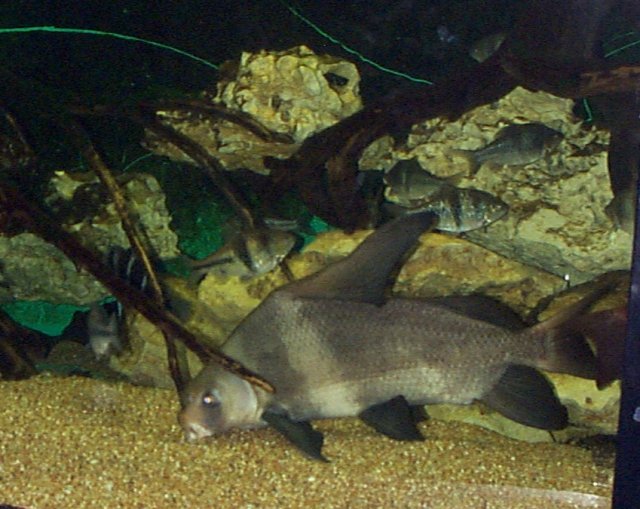Comments about the Chinese Sucker of the Fort
Worth Zoo:
Tim Huebner. Senior Advisor of Aquarium. (for 8.5 years)
Fish first entered the U.S. pet trade in 1976, when Nixon opened borders
to trade with China. The Chinese Sucker spends most of its time sifting
through gravel (mainly for food), uprooting plants and rocks. The M.
asiaticus shares its tank with fish such as the Long-nose Elephant
(Gnathonemus petersi) from Africa and the peaceful Spanner fish (Barbodes
lateristriga); however their relatives, the Tiger Barbs, inhabit a seperate
space due to their habit of nipping at the fins of other fish. The Fort
Worth zoo feeds their Chinese Sucker a combination of lean horse heart,
shrimp/bone/oat meal, and children's vitamins held together by a gelatin
base.

